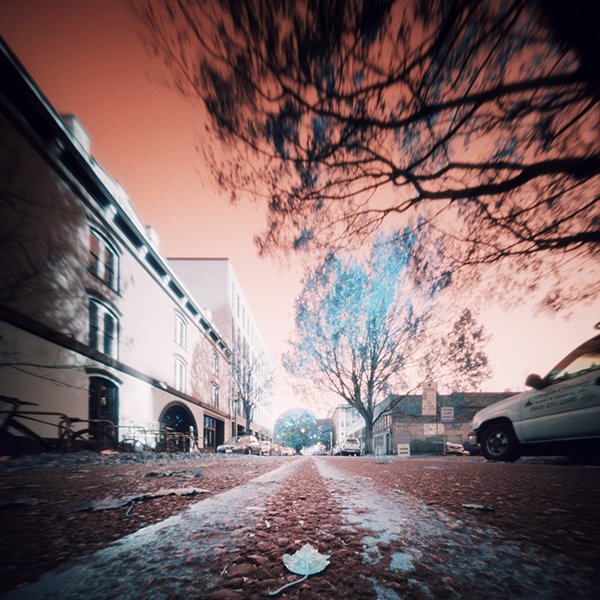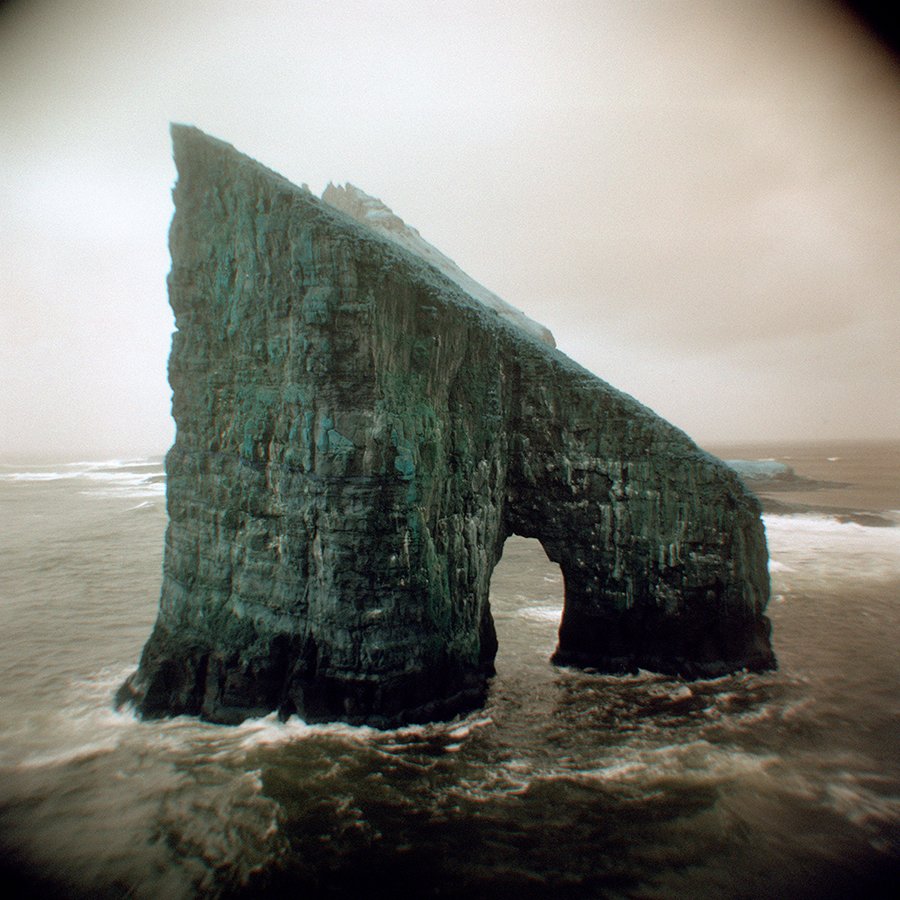Film Friday - July 25th, 2025. Lomochrome Turquoise Film Review
Have you found yourself photographing landscapes and wishing you could make them look a little bit more like Mars? Or making portraits that you wanted to be more Smurfesque? If you answered yes to either of those then you really need to know about Lomochrome Turquoise. But you don’t have to be Blue Man Group inclined to enjoy this wildly experimental film. Lomochrome Turquoise is really great at rendering surreal images, so read on to learn more about what this film can do for you!
Let’s start with a quick backstory. The Lomochrome line of films is a collection of experimental color films known for doing things a bit differently. It all started in 2013 with Lomochrome Purple. Lomochrome Turquoise was added in 2015. Lomochrome Metropolis became the third entry in 2022, and then Lomochrome Color ‘92 hit camera store shelves in 2023. Each Lomochrome film has a different way of handling colors: Purple swaps purple and green colors, Turquoise swaps blues and oranges, Metropolis has a faded but high contrast look and Color ‘92 is meant to recreate a nostalgic 90's era color phenomenon.
When it was first released in 2015, Lomochrome Turquoise became an instant favorite. Its wild color shifts were immediately popularized and the limited edition quantities of the film sold out within about a year. After that the only way to find Lomochrome Turquoise was at escalated prices on eBay. One of our own staff members successfully sold a handful of rolls around 2021 for upwards of $75 each. This goes to show you just how scarce finding this film had become but at the same time just how sought after it still was.
To the great excitement of many, Lomography announced a new edition of Lomochrome Turquoise in 2022. This “2021 Edition” of Turquoise arrived in late 2022 and photographers rejoiced! As of summer of 2023, Lomochrome Turqouise is once again readily available and we carry it in four formats: 35mm, 120, 110 and even in Spy Film for Minox.
Lomochrome Turquoise is available in 35mm, 120, 110 and even Spy Film for Minox!
Alright, let’s talk about just what Lomochrome Turquoise does. The TLDR is that Lomochrome Turquoise works by replacing blue colors with oranges and reds and it replaces oranges and reds with blues and turquoise. In this sense blue skies become orange. Skin tones become blue. The Golden Gate Bridge turns blue. Yellow sunflowers turn turquoise. And so on.
How exactly the film does this is left to educated guesswork. The best likely explanation we can offer is that Lomography has this film custom made to their specifications. Normal color film emulsion has three main layers arranged in a blue, green, red order (from emulsion to base). These layers produce corresponding yellow, magenta and cyan dyes when developed. The combination of these dyes stacked one atop another produces a color image. Lomochrome Turquoise is rearranging the order of these layers. Either they have swapped the blue and red layers, or they have swapped the dyes these layers produce so that the blue layer is producing a cyan dye and the red layer is producing a yellow dye. We don’t understand enough about film manufacturing to know which of these is more feasible but they essentially amount to the same thing.
A basic cross-section of standard color film. Lomochrome Turquoise swaps these layers around to produce its distinct effect.
The overall effect is that if you are photographing a subject in the blue family it is going to have its colors reproduced in shades of orange to red, while colors in the red family will have its colors reproduced in shades of blue to turquoise. Since the green layer and its magenta dye are largely untouched, green colors stay fairly close to green, albeit with some subtle color shifts (greens seem to inherit a blueish cast and have less yellow in them with Turquoise). How about a couple of samples?
In this image Angela is wearing a blue hat and a yellow coat. You can see how Turquoise handled those along with her skin tone and yellow hair.
A yellow sun setting over the ocean. The blue sky above sunset turns orange while the yellow sun is decidedly bluish.
Yellow leaves against a blue sky. This autumn image shows how yellows can shift toward turquoise in color and once again shows how this film handles blue skies.
In some ways we like Lomochrome Turquoise even more than Lomochrome Purple. Lomochrome Purple works best if you are photographing either green or purple subject matter. It is an awesome film if you take it into a forest or a grassy field, but purple objects are a bit trickier to come across and render in a distinct way that stands out. Outside of greens then, Lomochrome Purple has much less dramatic an effect looking like color film with a noticeable color cast and not much more. But Lomochrome Turquoise, working as it does on a blue-red axis offers many more possibilities for real world use. Since we encounter recognizably blue or red objects much more often, it is easier to produce images taking advantage of Turquoise’s specific look. Just the commonality of blue sky alone makes Turquoise an easy film to hit the ground running with, not too mention its use with portraiture and skin tones! For this reason we think Turquoise is the easiest film of the Lomochromes to start with and get fun results.
There really isn’t a ton more to know about this film. Like with Purple, Lomochrome Turquoise boasts a variable speed of ISO 100-400. Turquoise’s colors don’t shift quite as much depending on film speed rating as does Purple. In general, rating Turquoise at ISO 100 introduces more yellow into your images so instead of reds becoming blue, they look more turquoise and instead of blue skies turning crimson they look more orange. That is about the only difference that we have noticed.
This image shows the increase in yellows that Turquoise sees when it is exposed at ISO 100. The blue skies have rendered more orange while the red brick train station is more turquoise.
Meanwhile the film has more blue to it when shot at ISO 400. The skies are more crimson than orange and the blues are more blue than turquoise.
Lastly, if you want an alternate look at this film as well as some unconventional ideas for experimenting with it, check out this YouTube video by Attic Darkroom on how not to shoot Lomochrome Turquoise.
Seeing as how Lomography has always billed this film as being sold in limited edition runs and they release new editions to replace previous ones, we cannot promise the future availability of this film. It was “discontinued” once already and resurrected. Hopefully Turquoise has an ongoing presence among our film inventory.
We have almost every film stock available on the market. Check it out!
If you need an excellent lab for meticulous film developing, topnotch optical prints, traditional darkroom printing and superb film scanning, we’re your lab!
Also, sign up for our weekly newsletter The Loupe and keep your eyes peeled on our social media feeds every Friday when we feature a different film and also offer it at a one day discount of 15% off!
Combining Lomochrome Turquoise with super long exposures. Image made with a Hasselblad 500C.
Our darkroom tech Peter looking like the creepiest Smurf ever. Image made with a Holga 120N.
The yellow balsamroot of Rowena Crest rendered through Lomochrome Turquoise. Image made with a Fuji G617.
Lomochrome Turquoise is a good film to have a roll of in your bag just for those occasions you want to try something different. Especially useful for oft-photographed locations like Drangarnir in the Faroe Islands. Image made with a Holga 120N.
Looking for yellows, oranges, reds, and blues is a good place to start with Lomochrome Turquoise. Image made with a Canon AE-1.
Who said White Walkers couldn’t hand model? Image made with a Canon AE-1.
Blue strawberries anyone? We custom slit Lomochrome Turquoise into Spy Film for Minox. Image made with a Minox B.






















